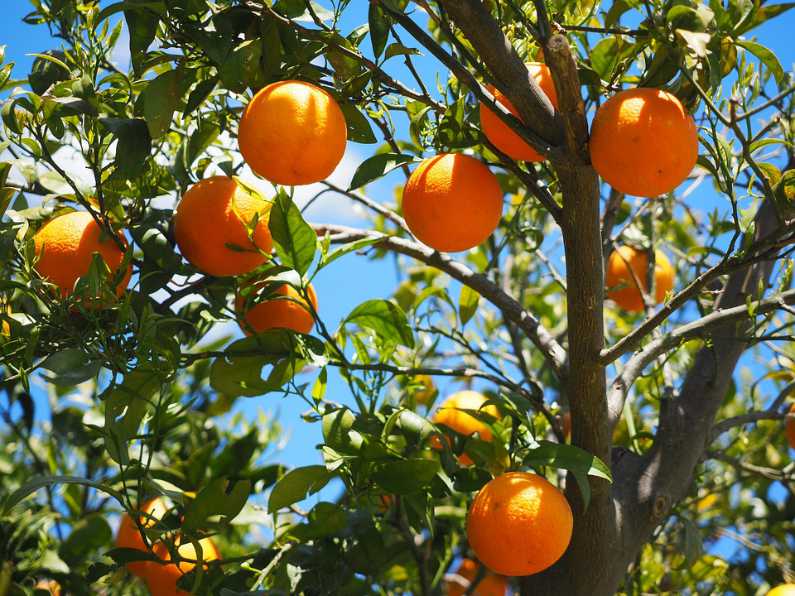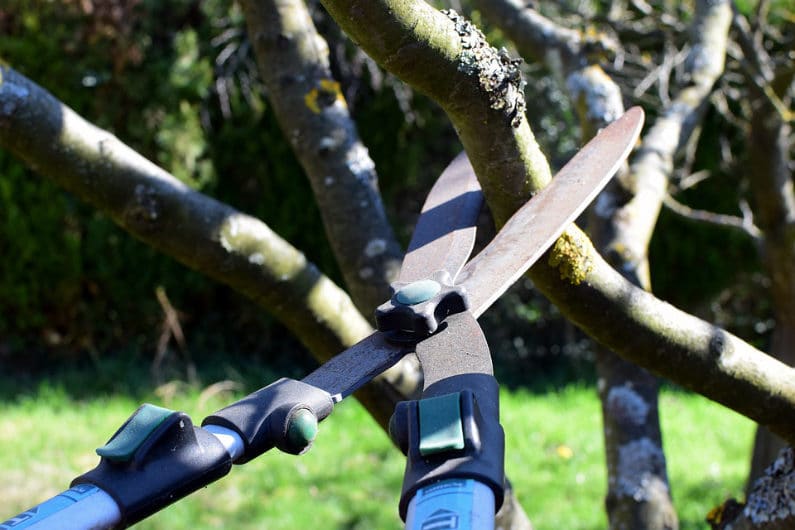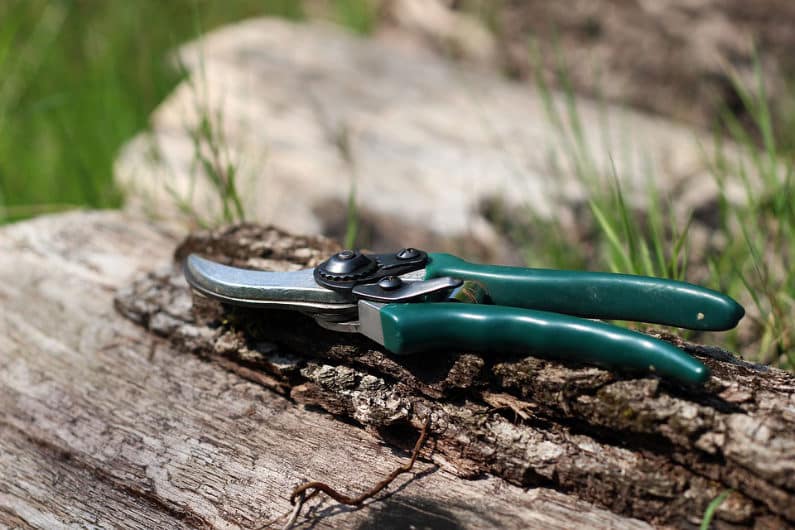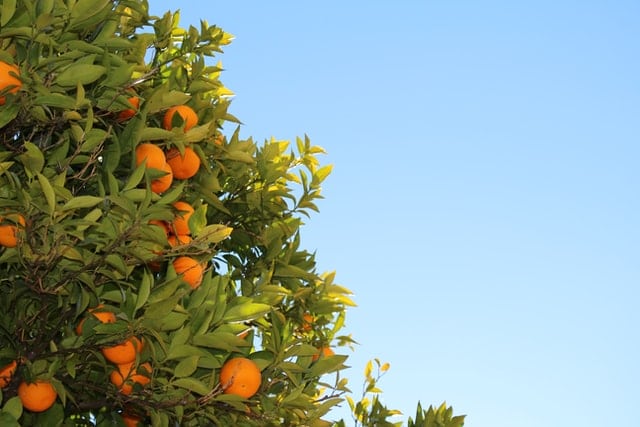As the weather changes, trees and plants can come under stress. During these times, it’s crucial to know how to take care of your precious fruit trees.
An important part of this is pruning your fruit trees.
For inexperienced gardeners, pruning can feel intimidating — once a branch is pruned, there’s no going back! However, it doesn’t have to be as scary as it seems.
As part of our regular garden maintenance services, we prune a lot of citrus and fruit trees in Perth, citrus fruit trees seem to be especially popular with our clients. So we thought we would provide a few tips on how to take care of them through proper pruning!
In this blog post, we’ll run you through some essentials you need to know to keep your fruit trees pruned, healthy and happy along with a few of our “garden geek” tips.

Click to read what you'll find in this post
Why Should You Prune Fruit Trees?
Pruning your fruit trees is important to ensure trees stay healthy and happy. This is particularly true during winter for most types of fruit trees.
Essentially, the pruning process is about promoting growth for your trees. Branches that you cut back will re-grow, in turn encouraging the tree to produce more fruit.
Pruning also helps the tree’s general health and can make it more aesthetically pleasing.
Pruning trees helps to:
- develop and maintain ideal tree shape and size
- allow more sunlight into the centre of the tree
- improve air circulation around leaves and branches
- reduce the risk of disease
- remove dead branches — these can harm the tree and become a safety hazard!

When Is The Best Time For Pruning Fruit Trees?
There are several types of pruning and many types of fruit trees. Pruning is recommended at different times of the year depending on the climate, why you are pruning, and the type of fruit tree.
In most cases fruit trees are pruned in winter, or early spring, when the tree is dormant (not actively growing).
Dormant pruning
In Perth dormant pruning is typically performed in the colder months (June to August).
This type of pruning aims to protect the structure of a mature tree, or help a young tree form a basic shape. It stops branches from crowding together or crossing over one another.
Dead, diseased or broken branches can also be removed. These are not just unsightly, they drain the plant’s energy!
Summer pruning
Summer pruning is often done around December in Perth, to keep vigorous trees to a manageable size.
Summer pruning is also useful to maintain a pleasing shape.
The other reason for summer pruning is that some types of fruit trees, like apricots and cherries, become more disease prone if pruned in winter.
During Summer pruning, you usually remove any suckers (shoots that grow low down on the trunk). These often grow as a response to compromised roots.
Cut them as low as possible to discourage reshooting. This helps to conserve the tree’s energy for more productive growth.
Inner-facing branches are removed to improve sunlight and airflow to the centre of the tree. Other branches can be shortened, both to balance the tree’s appearance and to prevent them getting too long and thin – these types of branches are prone to breakage when loaded with fruit.
Other seasonal preferences:
Citrus – prune tips all year round as needed
Figs – prune in winter
Apples and pears – deciduous trees are pruned while dormant
Grapes – prune hard in winter, trim in the warm months
The life cycle of a fruit tree
How often you should prune also depends on the age of the tree.
Pruning in year one is to form the tree’s shape and encourage growth. Trim the central trunk down to where there is an outward-facing bud, about 75cms above ground.
The next year remove inward-facing branches and lower shoots. Reduce upward shoots by half to allow for new branches.
By year three your fruit tree will have its shape. Cut the best branches in half – this strengthens the tree to carry fruit.
By year four you won’t need to prune heavily after fruiting. Large branches can be reduced by one-third and the top pruned to keep the height manageable.
After five years, pruning your mature tree once a year after fruiting is all that’s needed.
If you want to hand over the fruit tree pruning to the professionals, have a look at our tree pruning services and get in touch.

What Tools Do You Need to Prune Fruit Trees?
When pruning fruit trees, your main tool will probably be sharp secateurs. You might also use a tree lopping tool for larger branches, or a pruning saw if making major structural changes.
Before pruning, and even between pruning individual trees, disinfect the blades of tools you use with a solution of 1 part bleach to 10 parts water (don’t make it any stronger!)
This removes traces of tree sap and other contaminants, reducing the risk of disease being carried from tree to tree by tools.
How To Prune Fruit Trees — A Step-by-Step Guide
Now that you understand the “why” and have all the tools you need, it’s time to learn the steps to a perfect pruning.
Step 1: Clean Up the Deadwood
Firstly, examine your tree for branches that are dead or broken. These can be a hazard during extreme weather and a danger to your tree, encouraging disease and stunting growth. Cut these away to help your tree (and your property) stay healthy!
Step 2: Trim out Sprouts and Suckers
Your next step is to trim unnecessary growth like water sprouts and suckers.
Water sprouts are vertical growths caused by stress or damage — for example, from severe weather, soil compaction, drought, or disease.
Growing from dormant, buried buds in the bark, water sprouts appear on the trunk and branches of a tree, sapping the tree’s energy. They can ruin its shape, allowing pathogens and disease in and weakening an otherwise strong structure.
Suckers look similar, but grow around the base of the tree from the root system, stealing nutrients and ruining the ‘look’ of a tree. They’re also best removed to conserve the tree’s energy.

Step 3: Cut Back and Thin Out
At this point, it’s time to begin the main job.
First, thin out the branches of your fruit tree to allow more light and air into the canopy. This will help your tree produce more fruit!
Next, cut back any wayward branches running sideways, downwards or crowding over each other.
Step back and take a look at your tree. If branches are spaced out evenly and spreading out from the middle of the tree, then you’re golden.
If you can still see branches competing or crossing over each other, check if any are growing from the same spot or next to each other from different points on the tree.
In either case, keep the healthiest branch with the best angle from the tree (branches should sit at approx. two o’clock or ten o’clock position). Remove the weaker competing branch.
Finish up your thinning out process by giving all branches around 15-30cm of air space. (Smaller branches can be left a little closer together.)
Step 4: Topping and Skirting
Another aspect to pruning fruit trees is topping and skirting.
Topping
Pruning the top of a tree to make it easier to harvest from is controversial. It is best to only do this when necessary (for example to help a tree recover from storm damage) and if you are confident the tree can recover.
Topping trees can lead to unbalanced root-to-crown ratio, disturbing the tree’s ability to produce energy and photosynthesise. A tree may also be shocked by topping and grow erratically. These problems can lead to tree death.
Skirting
This is the process of cutting back branches hanging low to the ground. Well-developed trees should be skirted to about 75cm above ground level, leaving enough room for the branches to droop a little when bearing fruit, without dragging on the ground.
Step 5: Heading Back
Heading back is the process of shortening a branch or new shoot to encourage growth, and is performed on the outer edges of the tree. Think of this as giving the tree a haircut!
Heading back keeps a tree looking neat, and helps branches grow solid and strong.
For best results, cut back approx. 20-30% of last year’s growth — this could be anywhere between 5cm and 1.5m depending on the tree type and maturity.
FRUIT TREE PRUNING TIP
Remember, when pruning any tree it’s best to cut as close to the branch as possible!
Fruit Tree Pruning Shapes
For an extra special touch, shape your fruit trees in a way that suits the overall look of your garden. This will make your trees look well-cared for and give your garden a consistent aesthetic.
Natural
Natural shaping is a “hands-off” philosophy that says that a fruit tree will fruit quicker and more strongly if left without pruning. Those who are fans of natural gardening techniques may prefer this option.
Trees can grow very tall using this method, and fruit may be difficult to harvest. Suckers and sprouts may also become a problem.
Open Centre
The “open center” shape is best suited to stone fruit such as plum, nectarine, apricot or cherry trees. This may also be referred to as a “vase shape”.
Often, stone fruit will grow this way naturally to begin with — in this case, select three to five of the strongest branches as a foundation and prune away any branches that cross over or compete with each other.
If your tree is shaped differently, prune branches into the vase shape described by choosing the strongest branches as a basis.
Prune branches in a way that leaves open space at the centre of the tree — this lets in more light and allows for better airflow.
Central Leader
A central leader shape is where the central trunk or “leader” forms the basis of the tree’s shape.
The central leader is emphasised by pruning all branches on the lower section of the trunk. To achieve this, trim all branches from around 9m down to the soil level.


